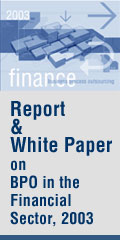|


|
Indian Government announces measures for stimulating the economy
December 07, 2008:
Indian Government has been concerned about the impact of the global financial crisis on the Indian economy and a number of steps have been taken to deal with this problem.
First steps were taken to infuse liquidity into the banking system and also to address problems being faced by various non-bank financing companies. These steps have ensured that the financial system is functioning effectively without suffering the kind of loss of confidence experienced in the industrialised world.
On the monetary side, the RBI has sought to pump sufficient liquidity into the banking system to enable bank credit to meet the expanded requirements of the economy keeping in mind the contraction in credit from non-bank sources. Banks have been provided adequate liquidity through a series of reductions in the CRR and additional flexibility in meeting the SLR requirement. Interest rate reductions have also been signalled by reductions in the repo and reverse repo rates, the most recent of which was announced on Saturday when both the repo rate and the reverse repo rate were cut by 100 basis points. Access to external commercial borrowings has also been liberalised so that borrowers capable of accessing funds from abroad are allowed to do so. The banks are being encouraged to counter what might otherwise become self-fulfilling negative expectations by enhanced lending to support economic activity.
These measures in the area of money and credit are being supplemented by fiscal measures designed to stimulate the economy. In recognition of the need for a fiscal stimulus, the government had consciously allowed the fiscal deficit to expand beyond the originally targeted level because of the loan waivers, issue of oil and fertilizer bonds and higher levels of food subsidy. In addition, the following steps are being taken:
1. Plan Expenditure:
In order to provide a contra-cyclical stimulus via plan expenditure, the Government has decided to seek authorisation for additional plan expenditure of upto Rs 20,000 crore in the current year. In addition, steps are being taken to ensure full utilisation of funds already provided, so that the pace of expenditure is maintained. The total spending programme in the balance four months of the current fiscal year, taking plan and non-plan expenditure together is expected to be Rs.300,000 crore.
The economy will continue to need stimulus in 2009-2010 also and this can be achieved by ensuring a substantial increase in plan expenditure as part of the budget for next year.
2. Reduction in Cenvat:
As an immediate measure to encourage additional spending, an across-the-board cut of 4% in the ad valorem Cenvat rate will be effected for the balance part of the current financial year on all products other than petroleum and those where the current rate is less than 4%.
3. Measures to Support Exports
i) Pre and post-shipment export credit for labour intensive exports, i.e., textiles (including handlooms, carpets and handicrafts), leather, gems & jewellery, marine products and SME sector is being made more attractive by providing an interest subvention of 2 percent upto 31/3/2009 subject to minimum rate of interest of 7 percent per annum.
ii) Additional funds of Rs.1100 crore will be provided to ensure full refund of Terminal Excise duty/CST.
iii) An additional allocation for export incentive schemes of Rs.350 crore will be made.
iv) Government back-up guarantee will be made available to ECGC to the extent of Rs.350 crore to enable it to provide guarantees for exports to difficult markets/products.
v) Exporters will be allowed refund of service tax on foreign agent commissions of upto 10 percent of FOB value of exports. They will also be allowed refund of service tax on output services while availing of benefits under Duty Drawback Scheme.
>>> GO TO SECOND PAGE
RBI again slashes repo rates to provide growth stimulus
Government measures should stabilize global banking markets
IMF Welcomes Comprehensive European Response to Financial Crisis
IMF sees heightened risks to global financial stability
Indian Government sets up group to assess liquidity requirements
Subprime Crisis: A Special
CLICK FOR SPECIAL SECTION ON GLOBAL FINANCIAL CRISIS
CLICK FOR MORE FEATURES & STORIES

|
|
|